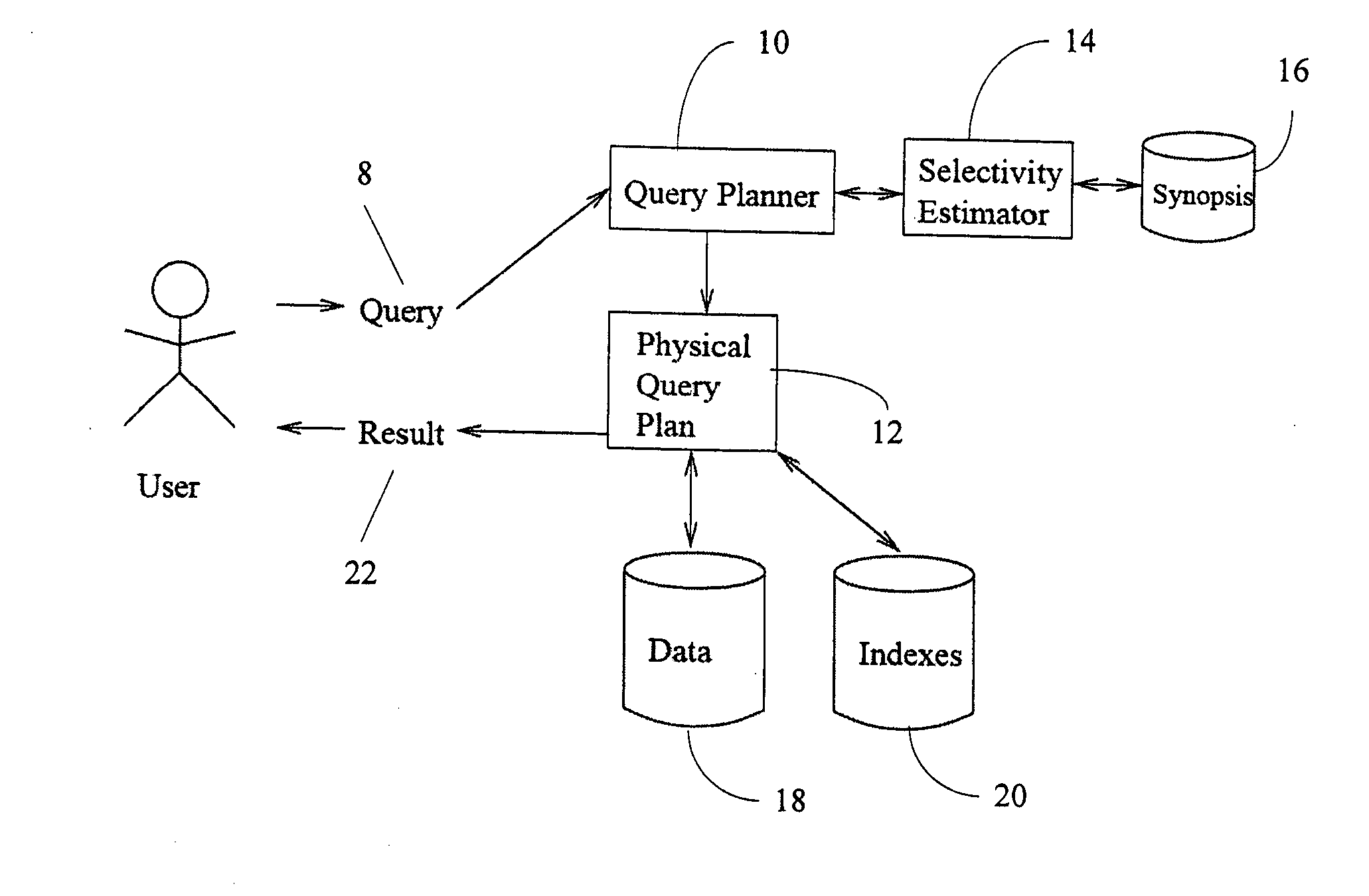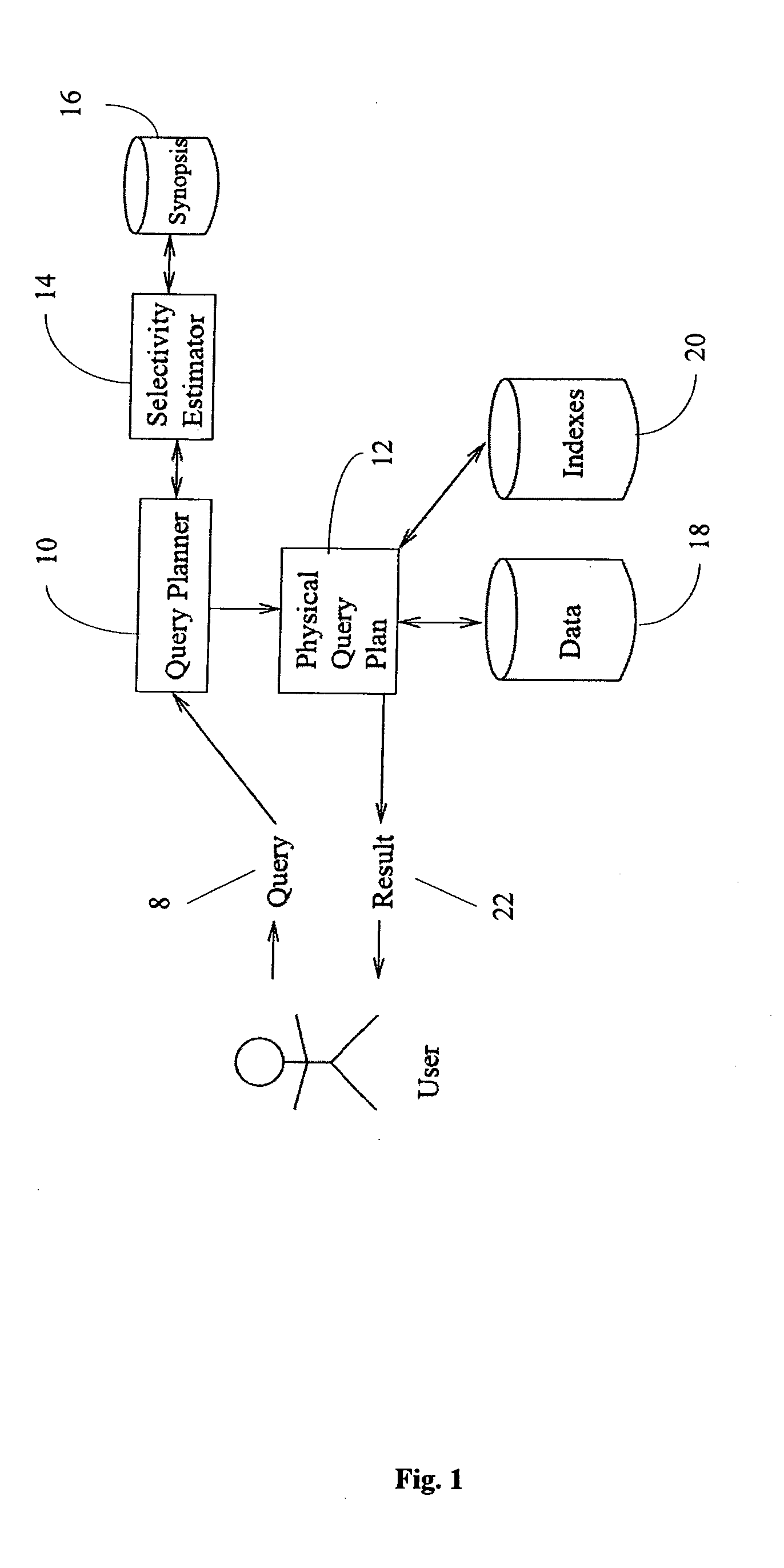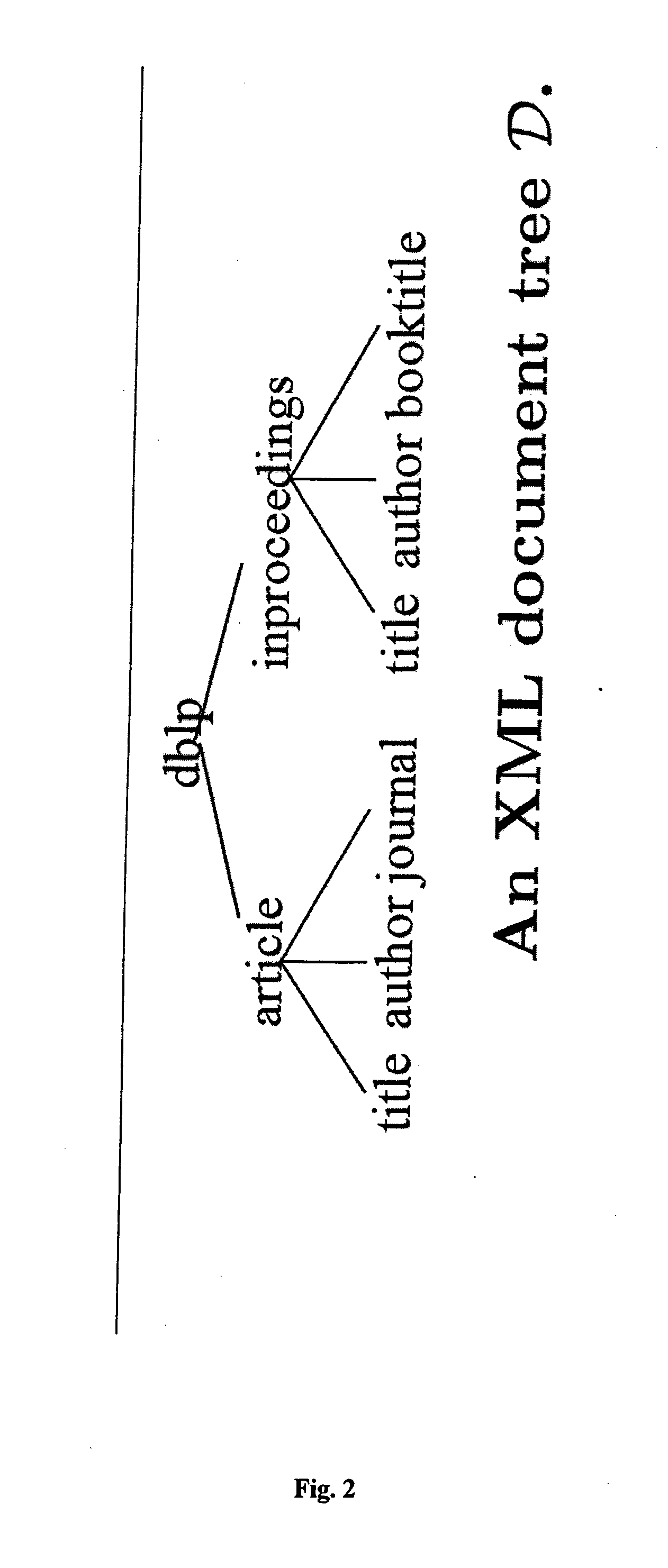Selectivity estimation
a tree structure and selection technology, applied in the field of selection estimation, can solve the problems of affecting the efficiency of query evaluation, presenting many new challenges, and involving the relative result size of two or more twigs, and achieve the effect of efficient updating
- Summary
- Abstract
- Description
- Claims
- Application Information
AI Technical Summary
Benefits of technology
Problems solved by technology
Method used
Image
Examples
Embodiment Construction
[0096]Documents Let D be the ordered, rooted, labelled, unranked tree corresponding to an XML document; for our purposes we can safely ignore attributes, node values, names-paces, processing instructions, and other features of XML (many of these can be handled by our results in a straight-forward fashion). By Σ we denote the alphabet of elements present in D; while in its full generality XML allows Σ to be countably infinite in size, we restrict it for convenience so that it is finite and |Σ|=O(1) (with respect to |D|). FIG. 2 gives an example of the structure of an XML document.
[0097]We shall represent XML documents using a binary, ranked representation bin(D) of D. The transformation into this representation is simple: the left edge of the binary tree represents the “first child” relationship, while the right edge represents the “next sibling” relationship. We use ⊥ to denote the empty tree, and write VD for the vertices of the document (in the ranked representation), and λ: VD→Σ ...
PUM
 Login to View More
Login to View More Abstract
Description
Claims
Application Information
 Login to View More
Login to View More - R&D
- Intellectual Property
- Life Sciences
- Materials
- Tech Scout
- Unparalleled Data Quality
- Higher Quality Content
- 60% Fewer Hallucinations
Browse by: Latest US Patents, China's latest patents, Technical Efficacy Thesaurus, Application Domain, Technology Topic, Popular Technical Reports.
© 2025 PatSnap. All rights reserved.Legal|Privacy policy|Modern Slavery Act Transparency Statement|Sitemap|About US| Contact US: help@patsnap.com



